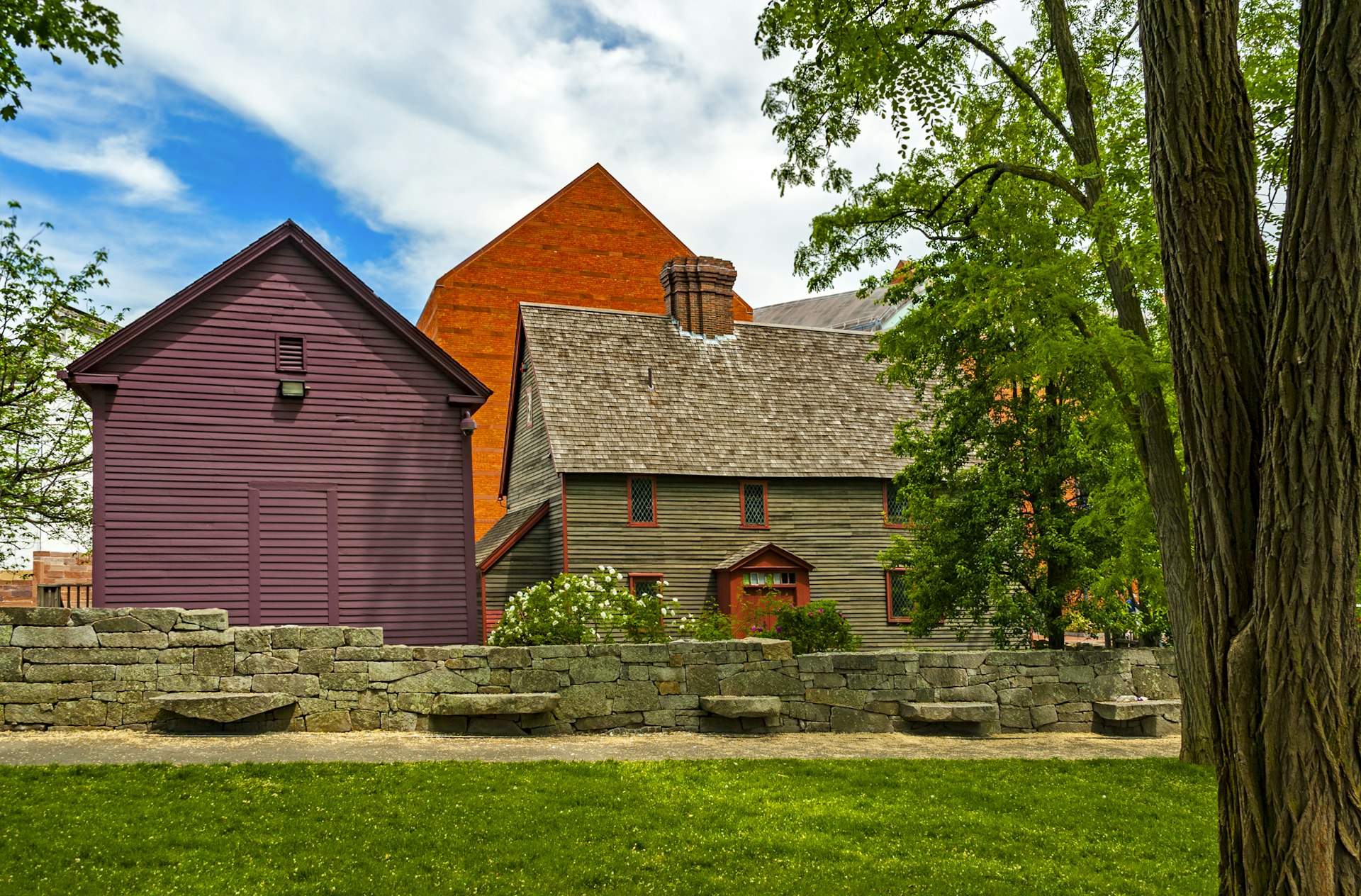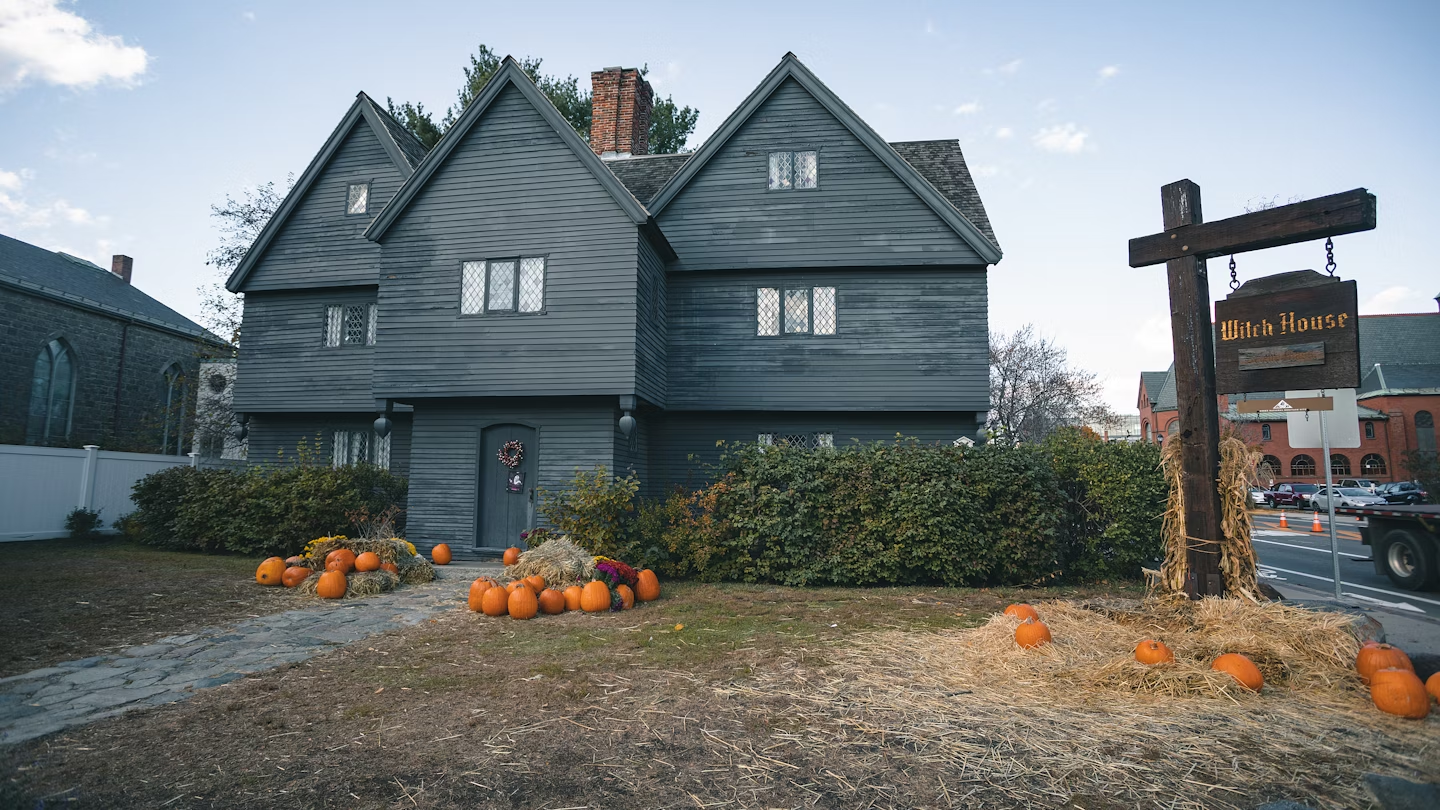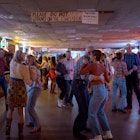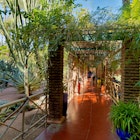Founded in 1626, just six years after the Mayflower arrived at what became Plymouth Colony, Salem is one of the oldest settlements in New England.
Most famous – or infamous – for the 1692 witch hysteria that led to the deaths of 20 people, this walkable small city also has a rich maritime history, a world-class museum of art and culture, an abundance of architecturally interesting historic homes and a famous literary native son – 19th-century author Nathaniel Hawthorne.
In recent years, Salem has also become known as a dining destination, with dozens of restaurants serving up a diverse mix of cuisines in settings ranging from extremely casual to elegant fine dining. You’ll find restaurants and bars scattered throughout the downtown area, with particular concentrations along and around Washington and Derby Streets.
1. Salem Maritime National Historic Site
The sea has been an integral part of Salem’s identity for as long as people have been living here. In fact, the original Native American name for the area, Naumkeag, derives from an Algonquian word meaning fish. With the arrival of the first English colonizers, Salem eventually grew into one of the leading seaports in the Americas, sending tall ships to far corners of the globe during the 18th and 19th centuries.
Salem Maritime National Historic Site is the place to go to explore this fascinating maritime heritage. Stroll along the downtown waterfront to the city’s longest wharf, Derby Wharf, which extends nearly half a mile into the harbor. Here stands the Pedrick Store House, which dates to 1770 and played a role in the Revolutionary War as a warehouse for British goods captured by privateers.
Docked alongside is the Friendship of Salem, a replica of an 18th-century three-masted merchant ship that voyaged to many distant destinations before being captured in the War of 1812 – it’s open to visitors on weekends. Walk to the far end of the wharf for beautiful harbor views and a close-up look at the Derby Wharf Light Station, first lit in 1871 and still in operation.
Across Derby Street, a gilded eagle sits atop the elegant red-brick U.S. Custom House from 1819, which once bustled with trade-related activity. Nathaniel Hawthorne worked as a revenue inspector here for three years and incorporated elements of the experience into his novel The Scarlet Letter. Surrounding the Custom House are several historic homes, stores and warehouses, many of them open to visitors.
Stop by the Salem Visitor Center in the old Salem Armory on Liberty Street for information and a free orientation film (usually shown three times a day) or download free digital tours and interactive materials from the park’s website to guide your exploration.
Planning tip: Ranger-guided tours are also available – check the website for current details.

2. Peabody Essex Museum
The oldest continuously operating museum in the United States, the Peabody Essex Museum began as the East India Marine Society, an organization founded by a group of Salem sea captains and merchant ship officers in 1799.
The Society’s charter established a “cabinet of natural and artificial curiosities” filled with objects members had collected in far-flung places across the globe. Over the years the organization expanded and evolved into a world-class museum of art and culture.
PEM’s holdings of more than 1.8 million works include impressive collections of maritime art and artifacts, American art in addition to art from China, Japan, Korea, South Asia, Oceania and Africa. Much of the museum’s core collection comes from Salem’s maritime heritage and its strong trade connections with Asia during the 18th and 19th centuries.
A highlight is Yin Yu Tang, a 200-year-old wooden house built for a prosperous merchant’s family in southeastern China and brought to Salem in 1996. PEM also hosts numerous special exhibits each year.
3. The Witch House
The popular name for this house on the corner of Essex and North Streets is a misnomer: no one accused of witchcraft ever lived here. It was actually home to the Corwin family, whose patriarch, Jonathan Corwin, purchased the house in 1675 and served as one of the judges during the witchcraft trials 17 years later.
One of the oldest houses in Salem, it’s the only remaining building open to the public with a direct connection to the trials.
The house consists of four rooms, two upstairs and two downstairs, furnished as they would have been when the Corwin family lived here. After a brief introduction by a staff member, the visit is self-guided. There are some exhibits about the witchcraft trials in the last room, but overall it’s really more of a look at what life was like in Salem in the late 17th century.
Planning tip: Halloween is understandably a busy season in Salem and advance reservations are required for the Witch House during the month of October.
4. The McIntire District
Located west and south of the Witch House, this residential district is renowned for its concentration of 18th and 19th-century homes, many of them built by Salem-born woodcarver and architect Samuel McIntire (1757-1811), including the Peirce-Nichols House (80 Federal Street) from around 1782.
Overall, the McIntire District contains examples of building styles from 1640 to 1940, making it a wonderful place to go for a walk if you’re at all interested in architecture. The main streets are Federal, Essex, Chestnut and Broad Streets between Summer/North Street and Flint Street. Chestnut Street has been called one of the most beautiful streets in America thanks to its many fine Federal-period buildings including Hamilton Hall, built by McIntire in 1805 as a society gathering place.
Most houses in the McIntire District are private residences, but limited tours are available of the Federal-style Phillips House (34 Chestnut Street) and the Ropes Mansion (318 Essex Street), built in 1727 in the Georgian style and remodeled in 1894. The garden is open daily, free of charge. Salem’s oldest house, the Pickering House, built in 1660, is at 18 Broad Street.

5. Salem Witch Trials Memorial
Just off Liberty Street, a small plaza with four-foot-high stone walls on three sides honors the victims of the 1692 witchcraft trials. This simple but moving memorial consists of 20 rough stone benches, each carved with the name of one of the victims together with his or her execution date and means of execution.
Nineteen people were hanged, while one elderly man, Giles Corey, was accused and tortured with stones piled on his chest. Refusing to confess, he was ultimately crushed to death. On the open side of the memorial is a stone threshold carved with words from the accused taken from transcripts of the trial proceedings.
6. Charter Street Cemetery
Also known as the Old Burying Point, this is Salem’s oldest cemetery, dating from 1637. Early wooden markers have rotted away, so the oldest identified grave is that of Doraty Cromwell, who died in 1673.
Though rather incongruously surrounded by modern brick buildings, the cemetery’s worn, crooked gravestones are an intriguing reminder of Salem’s long and fascinating history.
The cemetery was recently reopened after a landscape restoration project, and visitors are required to remain on the paths to protect the site. This puts many of the stones out of reach, but some of the key graves of historic interest can still be viewed up close.
Among these are the grave of Mayflower Pilgrim Richard More, who died in 1692; witch trials judge John Hathorne (a great-great-grandfather of Nathaniel Hawthorne); and architect Samuel McIntire. The entrance to the cemetery is through a small gate next to the Salem Witch Trials Memorial.

7. The House of the Seven Gables
Built in 1668 for the wealthy merchant and shipowner John Turner, this beautifully preserved historic house stands among lovely gardens overlooking Salem Harbor.
Also known as the Turner-Ingersoll Mansion, it was home to three generations of Turners before being sold to Captain Samuel Ingersoll and eventually passing to his daughter Susanna. Her second cousin, Nathaniel Hawthorne, visited often and became fascinated with the house, which eventually inspired his 1851 novel The House of the Seven Gables.
The house went through various metamorphoses over the years, with gables removed and quirky features added, such as a hidden staircase inside a chimney. Restored in the early 20th century to its perceived original appearance and furnished with period decor to match actual historic inventory lists, the house provides a fascinating insight into what life was like for the Turner and Ingersoll families.
Admission to the house itself is by guided tour, followed by self-guided exploration of the gardens and grounds, including the house in which Hawthorne was born (originally located a few blocks away and moved to the property in 1958).
Planning tip: Although the guided house tour is the best way to get the full historic experience, reduced-rate tickets are also available for just the gardens and grounds portion.
8. Guided Walking Tours
A guided walking tour is one of the best ways to see Salem and learn about the city’s history. Skilled local guides bring Salem’s dramatic past to life in a way that the various witch-related attractions struggle to do with dioramas and recorded presentations.
There are many good tour options to choose from, depending on your specific interests and whether you want a day or night tour, a history-focused tour or one that plays up the ghostly, witchy theme.
Bewitched After Dark and Witch City Walking Tours are both good options for two-hour walking tours blending deep historical knowledge with excellent storytelling skills.
For a spookier option, try Spellbound Tours, whose popular Voodoo, Vampires, and Ghosts tour mixes history with paranormal elements, guided by experienced paranormal investigators. The Salem tourism office has a useful guide to the many different types of tours available.

9. Salem Trolley
For a good general overview of Salem, take the hour-long trolley tour that begins at Armory Park outside the Salem Visitor Center. The route travels through downtown, the historic waterfront and the McIntire District, passing most of the city’s major points of interest.
The trolley route makes two different loops with a return to the Visitor Center in the middle, so you’ll want to stay on for both parts to get the full experience. Tickets are valid for a full day and allow you to get on and off at different attractions.
Planning tip: Note that the hop-on-hop-off option may be limited on October weekends when Salem is at its busiest.
10. Oceanfront Parks
About a mile and a half northeast of downtown Salem lie two city parks with beautiful waterfront views, both stops on the Salem Trolley route. Overlooking Beverly Harbor and the Salem Channel, Salem Willows Park has several small beaches, plenty of picnic tables and grassy areas shaded by the park’s massive namesake trees.
The scenic setting and recreational opportunities make “The Willows” a favorite local place for summer fun and strolls in any season. Despite signs calling it an amusement park, you won’t find big carnival rides here, though there are two arcades with games, bumper cars, a carousel and other fun for kids.
There are also numerous take-out fast food restaurants, including the popular Clam Shack under the willow trees and E.W. Hobbs, which has been selling popcorn, ice cream and other treats since 1897. The arcades and restaurants are open seasonally, generally between April and October, though hours vary.
Nearby, on a peninsula at the mouth of Salem Harbor, lies Winter Island Park, a decommissioned U.S. Coast Guard air station and a site of strategic importance since as early as 1643, when construction began on what eventually became known as Fort Pickering.
Largely rebuilt during the Civil War, the fort has deteriorated to ruins, though remains of earthworks and bunkers can be seen on Winter Island’s eastern side, near the Fort Pickering (Winter Island) Lighthouse, which dates from 1871. In addition to gorgeous ocean and harbor views, Winter Island has a beach, a boat launching ramp and a campground with space for tents and RVs.

11. Other witchy things to do in Salem
It wouldn’t be Salem without lots of witch-related attractions, some better than others. Here’s a roundup of what to expect from some of the more prominent sights related to Salem’s dark past, so that you can make informed decisions about how and where to spend your time and money in the Witch City.
Salem Witch Museum
Despite its name, the Salem Witch Museum isn’t really a museum at all, but rather a pair of witch-related presentations. The first takes place in a darkened room, with recorded narration and 13 life-sized dioramas illuminated in turn.
For the best views, sit on one of the stools in the middle of the room. The presentation gives a decent overview of the witch hysteria and trials, but it feels rather dated and might be a bit frightening for young children.
The second part of the visit looks at evolving perceptions of witches, with another recorded narrator discussing earlier witch hunts in Europe and the way witches have been portrayed in popular culture.
There’s plenty of interesting information here, but time is limited and the space gets crowded, even though large groups are divided in two, with half waiting in the gift shop. Still, if you keep your expectations modest, you may find this a useful, though somewhat overpriced, introduction to Salem’s witchy history.
Haunted Happenings
In most places, Halloween is a one-day event. Not so in Salem. Here, the entire month of October is filled with witchy, spooky activities including horror movies, ghost tours, costume balls, witch trial reenactments and late-night ghost hunts, all capped off with a fireworks display on Halloween night.
During this month of Haunted Happenings, downtown Salem fills with vendors, street performers and costume-clad visitors who come from far and wide to tour the city’s attractions, shop for witch-related souvenirs, visit a local psychic or join in the special events.
If you love Halloween – the witchier and kitschier, the better – October in Salem is for you. If crowds, queues for attractions and restaurants, and an overabundance of witch costumes sounds more like Helloween to you, you’re better off planning your visit for a different time.
Witches, Dungeons & Pirates
The Witch History Museum, Witch Dungeon Museum and New England Pirate Museum are a trio of attractions under the same management. If you’re interested in all three, buy the combo ticket, which will save you money, though the price is still a bit steep for what you get.
Like the Salem Witch Museum, the Witch History Museum uses dioramas with department-store-type mannequins to illustrate scenes from the witch trials. But where the Salem Witch Museum is a sit-down presentation with pre-recorded audio, the Witch History Museum involves an introduction by a tour guide, followed by a walk through a series of scenes with live guiding and pre-recorded sound effects. Though somewhat underwhelming, it can be a useful historical overview.
At the Witch Dungeon Museum, the visit begins in a theater-style room where a guide introduces the history of the witch trials, after which two performers act out a trial scene based on transcripts from the actual events of 1692. Afterward, the guide leads the way to the basement.
Here there are replicas of the dungeons where the accused were kept – in some cases for many months – while awaiting trial. Some of the jailed were kept in cells so small they had to remain standing, even while sleeping, for the duration of their imprisonment. The aging mannequins are slightly cheesy, but the dungeon does give a sense of the horrible conditions the accused endured. If you only have time for one, this is probably the best of the trio.
Like the others, the New England Pirate Museum consists of a guided tour of various dioramas. The history of piracy in New England is quite fascinating and not very well known, but how much you get out of your visit will really depend on the guide.
There are a few interesting artifacts in the first room and some signs worth reading along the way, but like its sister attractions, it’s really not a museum, so keep your expectations modest. It’s probably only worth visiting if you’re really interested in pirates or if you’re visiting the Witch History Museum and the Witch Dungeon Museum anyway and feel like spending a few extra dollars for the combo ticket that includes all three.












